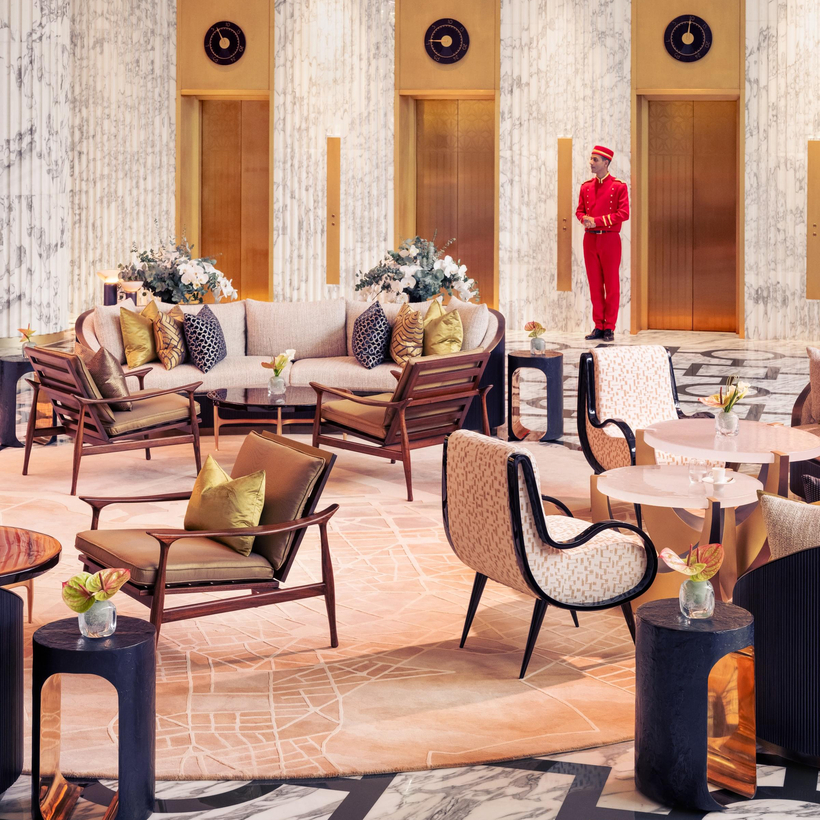It’s taken 82 years, but travelers are finally discovering that Morocco’s largest city is much more interesting than the fictional version conjured up at the Warner Bros. studios in 1942.
Casa, as the locals call it, is the display window for modern Morocco. Until recently, the country’s tourists have preferred to traffic in nostalgia and exoticism, retracing the steps of writer Paul Bowles in 40s-era Tangier and revisiting the stylish lives of John Paul Getty Jr., his wife, Talitha, Yves Saint Laurent, and Pierre Bergé in Marrakech.

Morocco is a well-educated young country of 37 million where the median age is 30. Under King Mohammed VI, it’s been making major investments in state-of-the-art mass transit, including the new Al Baroq high-speed train line that runs from Casablanca to Tangier and will eventually connect to Agadir and Marrakech. Tanger Med is the largest port in the Mediterranean, and Morocco has become Africa’s largest exporter of cars. While the West has been wringing its hands over China’s economic growth, Morocco has emerged as a regional powerhouse in the Maghreb, West Africa, and beyond.
Its architecture has always been superb. The Hassan II Mosque is one of the largest in the Islamic world, and Casablanca is home to a large concentration of some of the world’s best Art Deco buildings. Recently, it’s become a world-class capital of street art with a thriving contemporary art scene. (Don’t miss the outpost of Marrakech’s David Bloch Gallery and C.M.O.O.A., Compagnie Marocaine des Oeuvres et Objets d’Art.)

Now, Casablanca has a hotel that mirrors its ambitions. A new outpost of the Royal Mansour, owned by King Mohammed VI, follows up the five-star Royal Mansour Marrakech, which opened in 2010 and now ranks No. 23 in the most recent ranking of World’s 50 Best Hotels.
The Royal Mansour Casablanca’s interior design skews Art Deco, and its mustard, scarlet, burnt orange, olive green, ash gray, and cinnamon interiors nod to Morocco’s well-known spice merchants and souks. Casablanca is known for its fog, but when it finally lifts, some guests will enjoy a direct view of the Hassan II mosque’s 60-story minaret from their bedrooms.

Le Rooftop, the glass-walled dining room and bar on the hotel’s 23rd floor, feels like an island suspended in midair. It’s become one of the most fashionable places for the city’s jeunesse dorée to meet for drinks or an excellent pan-Mediterranean meal. At breakfast, its attitude is different; the pearled shadows of early morning mimic the feeling of the cozy courtyards found in many Moroccan homes. The restaurant smells of freshly baked flatbread and amlou, the deliciously smoky Berber spread made from ground almonds, argan oil, and honey.
In addition to an excellent sushi bar, the Royal Mansour Casablanca’s ground-floor restaurants include La Brasserie, from the French chef Eric Frechon. La Grande Table Marocaine, its opulent, traditional Moroccan restaurant, is found on the 23rd floor, with views of the city. (Overindulgence can be offset by a few laps in the infinity pool and some time in its well-appointed fitness center.) The hotel’s two-story spa offers a traditional hammam along with a full battery of facials, massages, and body treatments.

But the Royal Mansour Casablanca’s most important amenity is that it has the keys to unexpected delights. In addition to the usual tours of souks and monuments, the hotel can arrange for more immersive experiences in Casablanca’s culture—for example, a tour of the city’s street art with Alouane Bladi, a nonprofit organization that has worked to make these outdoor murals a signature of the city. There’s never been a more exciting and surprising moment to visit Casablanca—and it never hurts to watch the film during the flight.
Room rates at the Royal Mansour Casablanca begin at $590 per night; Air Mail was partly hosted
Alexander Lobrano is a Writer at Large at AIR MAIL. His latest book is the gastronomic coming-of-age story My Place at the Table: A Recipe for a Delicious Life in Paris


